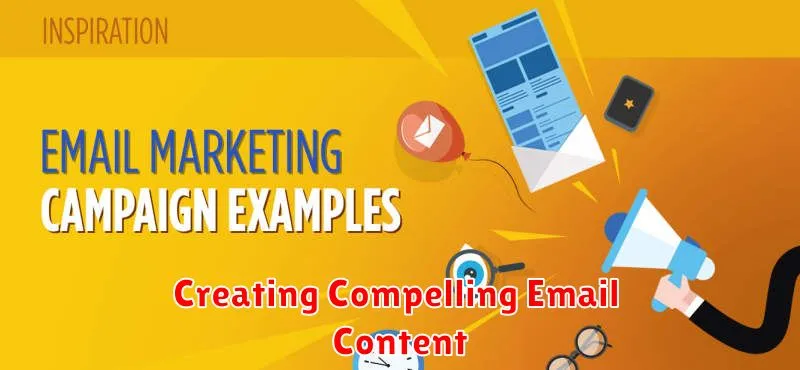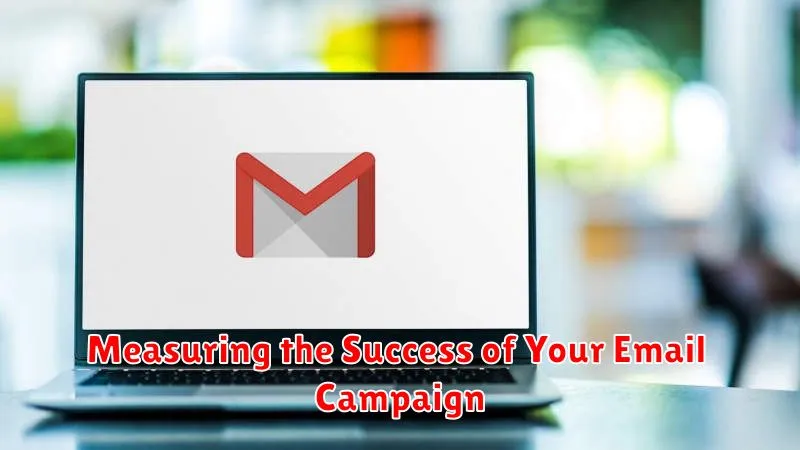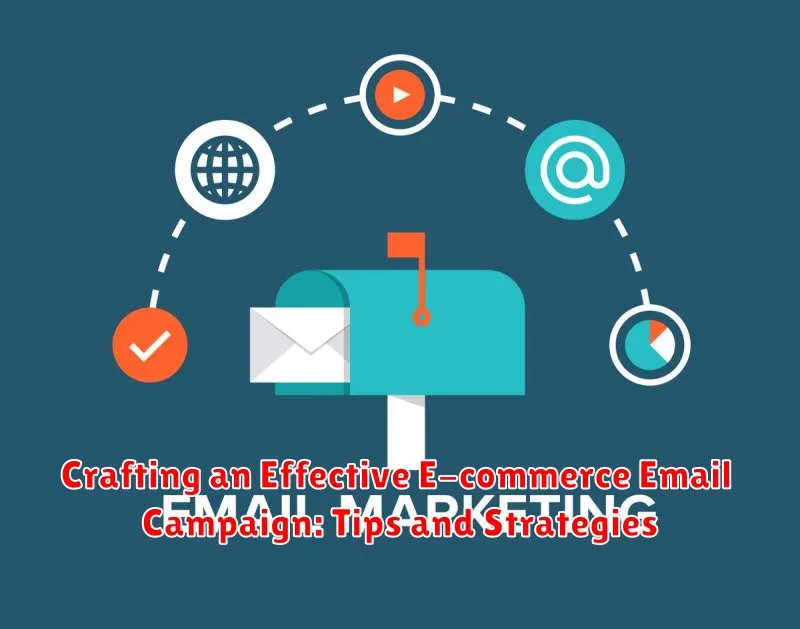In today’s competitive digital landscape, a robust and effective e-commerce email campaign is no longer a luxury, but a necessity. Crafting such a campaign is paramount to driving sales, boosting brand loyalty, and nurturing customer relationships. This article will delve into the tips and strategies essential for developing email campaigns that resonate with your target audience, ultimately converting subscribers into loyal customers. We’ll explore the key elements of a successful e-commerce email campaign, from crafting compelling subject lines and personalized content to segmenting your audience and analyzing campaign performance.
From welcome emails and abandoned cart reminders to promotional offers and post-purchase follow-ups, e-commerce email marketing encompasses a wide array of tactics designed to engage customers at every stage of the buyer’s journey. Mastering these strategies can significantly impact your bottom line. This guide will provide actionable insights and practical advice to help you optimize your email campaigns for maximum impact, covering everything from email design and automation to deliverability and performance measurement. Whether you’re just starting out with e-commerce email marketing or looking to refine your existing strategy, this article will provide the knowledge and tools you need to succeed.
Setting Clear Goals for Your Email Campaign
Before launching any email campaign, it’s crucial to define clear, measurable, achievable, relevant, and time-bound (SMART) goals. Without specific objectives, measuring the success of your campaign becomes impossible. What do you want to achieve with your emails?
Do you aim to increase brand awareness, drive traffic to your website, boost sales, or promote a new product? Clearly defining your objective will guide your strategy and content creation.
For example, if your goal is to increase sales, a measurable goal might be to achieve a 10% increase in conversions within three months of launching the campaign. If your goal is brand awareness, you might aim for a certain number of social media shares or email forwards.
Examples of clear goals:
- Increase website traffic by 15% in the next quarter.
- Generate 500 new leads through a lead magnet offer.
- Boost average order value by 5% within six months.
Once your goals are established, you can tailor your email content and calls to action to effectively achieve them. Regularly monitor your campaign performance against these goals and adjust your strategies as needed.
Building a Targeted Email List
A targeted email list is crucial for e-commerce success. It ensures your marketing messages reach the right audience, increasing the likelihood of conversions. Don’t just aim for a large list; prioritize quality over quantity.
Several strategies can help you build a targeted email list. Offer valuable incentives such as exclusive discounts, free shipping, or early access to new products in exchange for email sign-ups. Place prominent sign-up forms on your website, especially on the homepage, product pages, and during the checkout process. Use pop-up forms strategically, ensuring they are not intrusive and offer a clear value proposition.
Run contests and giveaways to attract potential subscribers. Make sure the prizes are relevant to your target audience to attract the right kind of subscribers. Leverage social media platforms to promote your email list and encourage sign-ups. Clearly communicate the benefits of joining your list, such as exclusive content and special offers.
Creating Compelling Email Content

Compelling email content is crucial for grabbing your audience’s attention and driving conversions. Every element, from the subject line to the call to action, needs to be carefully crafted.
Start with a captivating subject line that accurately reflects the email’s content and entices recipients to open it. Avoid misleading or overly sensationalized subject lines.
The email body should be concise and easy to read. Use short paragraphs, bullet points, and strong visuals to break up the text and highlight key information. Focus on the benefits of your products or services and how they address the recipient’s needs.
A clear and compelling call to action is essential. Tell your recipients exactly what you want them to do, whether it’s visiting your website, browsing a new collection, or taking advantage of a special offer. Make the call to action button prominent and easy to click.
Finally, ensure your emails are mobile-friendly. A majority of users access email on their mobile devices, so optimizing for a seamless mobile experience is crucial.
Choosing the Right Email Marketing Tools
Selecting the right email marketing tools is crucial for a successful e-commerce campaign. The right platform can streamline your efforts, automate tasks, and provide valuable data insights. Consider your specific needs and budget when evaluating different options.
Key features to look for include:
- Email Automation: Automated workflows for welcome emails, abandoned cart reminders, and post-purchase follow-ups.
- Segmentation Capabilities: Tools that allow you to divide your audience into specific groups based on demographics, purchase history, or behavior.
- Performance Tracking and Analytics: Robust reporting features that provide insights into open rates, click-through rates, and conversions.
- A/B Testing Functionality: The ability to test different email variations to optimize your messaging and design.
- Integrations: Seamless integration with your existing e-commerce platform and other marketing tools.
Research various platforms and compare pricing plans. Many providers offer free trials or freemium options, allowing you to test the software before committing. Choosing the correct tools empowers you to manage your email campaigns effectively and achieve your marketing objectives.
Segmenting Your Audience for Better Engagement
Segmentation is crucial for maximizing the impact of your email campaigns. By dividing your audience into smaller, more homogenous groups, you can tailor your messaging to resonate with their specific needs and interests. This leads to higher open rates, click-through rates, and ultimately, conversions.
Consider segmenting your audience based on various factors, such as:
- Demographics: Age, gender, location
- Purchase history: Past purchases, purchase frequency, average order value
- Website behavior: Browsing history, products viewed, abandoned cart items
- Email engagement: Open rates, click-through rates, email preferences
By targeting specific segments with tailored content, you can deliver more relevant promotions, product recommendations, and valuable information. This personalized approach fosters stronger customer relationships and encourages repeat business.
Automating Your Email Campaigns
Automation is key to scaling your email marketing efforts. By automating key email sequences, you can efficiently nurture leads and drive sales without constant manual intervention. Welcome emails are a great starting point, automatically greeting new subscribers and introducing your brand.
Abandoned cart emails are crucial for recovering lost sales. These automated messages remind customers of items left in their carts, often offering incentives to complete the purchase. Transactional emails, such as order confirmations and shipping updates, provide essential information and build customer trust. They can also include personalized product recommendations to encourage further purchases.
Consider using an email marketing platform that allows for segmented automation. This enables you to target specific customer groups with tailored messaging based on their behavior, demographics, or purchase history.
Measuring the Success of Your Email Campaign

Analyzing the performance of your email campaigns is crucial for continuous improvement and maximizing your return on investment. Key Performance Indicators (KPIs) provide quantifiable metrics to gauge effectiveness.
Start by tracking your open rate, which indicates how many recipients opened your email. A low open rate might suggest issues with your subject line or sender information. Next, monitor the click-through rate (CTR). This metric measures how many recipients clicked on a link within your email, demonstrating engagement with your content and offers.
Conversion rate is a vital KPI that reveals how many email recipients completed a desired action, such as making a purchase or signing up for a newsletter. Finally, keep an eye on your unsubscribe rate. A high unsubscribe rate could indicate problems with your email frequency, content relevance, or targeting.
Best Practices for E-commerce Email Marketing
Implementing best practices is crucial for maximizing the impact of your email campaigns. Segmentation is key; tailor content to specific customer groups based on demographics, purchase history, or browsing behavior. This personalized approach resonates more effectively than generic blasts.
Mobile optimization is essential. Ensure your emails render flawlessly on all devices, as a significant portion of users access email on their smartphones. A poor mobile experience can lead to unsubscribes and lost opportunities.
Maintain a consistent brand identity throughout your emails. Use your brand’s logo, colors, and fonts to reinforce brand recognition. Clear and concise call-to-actions are vital. Tell your recipients exactly what you want them to do, whether it’s browsing new arrivals, redeeming a discount, or leaving a review.
Finally, A/B testing different email elements—subject lines, visuals, and calls to action—can help you optimize your campaigns for better performance over time. Track your metrics and iterate based on the data you gather.

